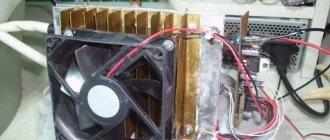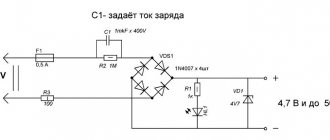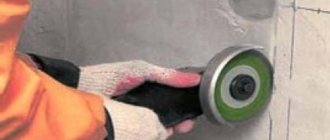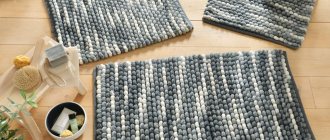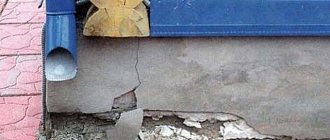Everyone knows the common heating methods: underfloor heating and installing radiators. However, there is another unusual option - a warm water baseboard. This option cannot yet be called very widespread, but nevertheless it is worth taking into account, because it combines the advantages of two types of heating at once: radiators and heated floors. Warm baseboards are now used to heat administrative and office buildings, residential buildings and apartments.
Baseboard heating
Despite the fact that in our country what a warm baseboard is became known not so long ago, in Europe premises have been heated using this method for several decades. This technology is very simple, but at the same time quite convenient. The basis is metal (most often copper) pipes, which are also the heating element. The pipes are installed in the same place where the baseboard usually runs, that is, along the perimeter of the room. Then they are covered with a metal box made of plates with a corrugated surface. Due to this design, the box acts as a heat exchanger, thereby increasing the efficiency of the structure.
In general, a water baseboard consists of the following elements:
- front panel with holes that ensure air flow (standard size: width - 3-4 cm, height - 15-20 cm);
- rear panel - facilitates installation of the structure and protects the wall from constant exposure to high temperatures;
- heating radiator that performs the heating function (standard dimensions - 1 m x 0.4 m x 1.6 m);
- rotating side plugs;
- a heat exchange module consisting of two tubes through which water circulates.
Currently, there is a variety of warm baseboards (electric.) They differ from warm water baseboards only in the type of heating element.
Due to the fact that the baseboard is installed around the perimeter of the entire room, the heat gradually rises, and then the entire room is evenly heated. As a result, this technology does not cause temperature changes. Since the heating element is hidden under the front panel, it is not noticeable, which distinguishes it from massive radiators. As you can see in the photo, the warm baseboard looks very neat; it can be additionally decorated so that it better matches the overall style of the room. The system is effective, but at the same time quite simple to install. Having minimal skills, you can carry out installation without involving professionals.
Warm baseboard system: what is it?
Heating baseboards or baseboard heating is not new in the heating field. The idea was proposed at the beginning of the last century, but due to the complexity of implementation and high price, it was almost forgotten. With the development of technology, the complexity has become lower, but the price still remains high. This is what mainly holds back potential users.
The main difference of this system is the non-standard shape of the heating devices and their unusual location. The heaters are long and low, located around the perimeter of the room at floor level. Heating appliances are covered with a long decorative strip that looks very similar to a plinth. When installed, they replace a regular baseboard. That is why such a system is often called “warm baseboard”. This system is very good for panoramic glazing - it can be no higher than the frames, so it is completely invisible. It is no worse in ordinary rooms - it is not visible at all.
Types of warm baseboards
There are two types of warm baseboards: electric and water. Electric warm baseboards are distinguished by the fact that each heating device is independent and can work separately. They can be installed in case of insufficient power of the main heating - as an additional one in case of cold weather. Installation is simple, and it works effectively, is invisible, and does not dry out the air too much.
There is a water-heated baseboard. This is one of the subtypes of water heating, that is, all heating devices are connected into one system. It can be either the main type (only baseboard heaters) or an additional type of heating (together with water heated floors or radiators).
Heating baseboard device
In any case, a warm baseboard looks like this: these are two copper tubes, which are located at a distance of 7-15 cm from one another. To increase heat transfer, vertical plates made of aluminum and brass are put on the tubes (they cost a little less, but the heat transfer is slightly lower) or copper (more expensive and “warmer” option). The finned pipes are covered on top with decorative covers made of extruded aluminum. Aluminum was not chosen by chance - it transfers heat well. So the heated lid itself radiates heat.
There are holes at the top and bottom of the lid for air movement. The cold is sucked in through the lower ones, and the heated one comes out through the upper ones. So it turns out that heating comes from three sources:
- The air that passes along the pipes and fins is heated.
- From heated walls.
- From the body of a warm metal baseboard.
This triple heat source ensures that the room heats up quickly, and the placement of heating elements around the perimeter contributes to uniform heating of the air throughout the entire volume.
Advantages of baseboard heating
It is not difficult to explain the popularity of water baseboards in the USA and Europe if you familiarize yourself with all the advantages of such a heating system. The advantages of the system are:
- Saving usable space in the apartment. The plinth does not take up much space, which can be invaluable for the inhabitants of small rooms.
- Installing a warm water baseboard with your own hands is not particularly difficult - it allows you to save money, since there is no need to pay for the work of craftsmen.
- Good room heating.
- High efficiency rate.
- Efficiency.
- If there is a need for repairs, access to the internal components is extremely simple: you need to remove the front panel.
- The appearance of the skirting board can be easily changed according to style requirements.
- Skirting boards are available in different colors.
- Pairs well with a variety of floor coverings.
- The plinth consists of separate modules, each of which can be easily replaced or upgraded if necessary.
- If you install a thermostat, then the heating will be maintained at the same level.
- Aesthetic appearance, no need to look for ways to hide batteries.
- Heating occurs from different sides, and not from one.
- Compactness.
Heating using a water baseboard is the best option if you need a high-quality heating system that is compact and efficient, but at the same time easy to install.
Of no small importance is the fact that a warm baseboard is one of the few heating methods that is ideal for “non-standard” rooms (with a high ceiling, an arched entrance, a large number of window openings). Even in such rooms, the air warms up quickly and evenly.
A warm water baseboard can be used as an independent heating system, or can be combined with a more traditional one. For example, radiators or heated floors are often installed in residential premises, and water skirting boards are installed in loggias, closed verandas, storage rooms, utility rooms and other rooms that are not used so often. A warm baseboard prevents the appearance of fungi and mold, as not only the air in the room heats up, but also the walls. At the same time, the air does not become excessively “dry”, the temperature is maintained at the optimal level. This allows you to avoid possible restrictions when planning heating in apartment buildings.
Do-it-yourself installation of a warm baseboard (video)
A warm baseboard is a brilliant invention that has recently appeared on our markets, but is already very popular. Such a baseboard can heat a room, despite its small size. Today, we know only two types of skirting boards: water and electric. Such skirting boards will ideally harmonize with any furniture and room decoration. They are installed not only in residential premises, but also in offices, warehouses, clubs, and cafes.
Related article: Professional advice: how to choose taffeta curtains
Manufacturers of water skirting boards
There are now a lot of manufacturers of warm baseboards, but when purchasing you should always choose only products from the most famous and reputable companies. Since water-based warm baseboards are not yet a common heating method, manufacturers’ brands may not be well-known. However, you need to know the most famous ones so as not to make a mistake in your choice:
- Mr. Tektrum (Russia);
- Thermia (Ukraine);
- Best Board (Austria).
The Best Board company produces lines of electric and water-heated baseboards, with the latter being the most widespread. The company's products are distinguished by their quality and practicality. Such skirting boards are very quickly assembled and disassembled, take up minimal space, and are very convenient to use. Front panels are available in different styles and colors. The cost of the structures is quite high - one section (usually 1 m long) costs at least $100.
The domestic manufacturer Mr. is slightly inferior to Best Board in popularity. Tektrum. This manufacturer focuses on budget buyers, so the prices for warm water skirting boards from Mr. Tektrum is significantly lower than its European counterparts. The cost of the design was reduced through the use of cheaper materials and components. What is especially pleasing is that if this affects the quality of the structure, it is insignificant.
Tectrum water skirting boards are produced in Vinnitsa and in the same way as Mr. Tektrum are aimed at average buyers. Skirting boards are of good quality and work well both in houses and apartments, but one section costs 5 times less than from an Austrian manufacturer.
In addition to the listed companies, others are also involved in the production of water skirting boards. For example, sections from Uden S have good characteristics. In general, good brands are quite sufficient. Therefore, it would not be superfluous to read reviews about water baseboards from different manufacturers before purchasing and make a decision on this basis.
Water or electric baseboard?
Currently, skirting boards are only available with water or electric, which makes choosing a design easier. The main criterion can only be the characteristics and conditions of the room.
So, it is not always possible to install a warm water baseboard. The design of such heating requires a heating boiler, which will “bring” the water to the desired temperature and send it into the pipes. In this case, the temperature of the heating circuit should always be approximately the same level.
For this reason, electricity may seem like a better option. It is already in the house and does not require the installation of additional structural components. Skirting boards with an electric heating element raise the temperature in the room faster than water ones. Electric baseboards are easier to install - just run the heating cable from the mains (voltage - 220 W), secure it and cover it with the front panel. All that remains is to connect it to the distribution unit, and the warm baseboard will start working. But in any case, installation requires skills in working with electricity.
But at the same time, electricity tariffs are rising almost every year, and in the end heating will cost much more. In addition, water heating is safer to use than electricity and more convenient in terms of regulating the temperature of the room.
Installing a water baseboard
In order to install a warm baseboard with your own hands, you need to prepare the following tools:
- adjustable wrenches;
- plastic scissors;
- pliers;
- hammer;
- hammer drill or drill;
- wire cutters
Before installing a warm baseboard, you need to measure the distance from the section to the collector connection. Using scissors, cut the plastic pipe to the desired size with a small margin. Place it so that the pipe outlet is 6 cm above the floor level, there should be at least 15 cm left to the corner. The pipe should be laid in the floor or in the wall, whichever is more convenient.
Glue the baseboard installations around the perimeter of the room using glue or self-adhesive tape. Installation of profiles must be started from the corner. Cut the profile and install it in any convenient way: with silicone, double-sided tape or screw it to the wall (floor).
Then you need to install the holders. To do this, you need to drill a hole 15 cm from the edge of the profile, and for the remaining clips - every 40 cm.
Then convectors are installed. Cut the plastic pipe to the required length, trying to ensure that it fits well with the section and that no kinks appear. Place a sleeve, nuts and a rubber gasket on the copper pipes. Install the support sleeve into the plastic pipe, twist it and tighten it with an adjustable wrench of the required size.
Place the radiator against the wall. If brass fins remain, remove them with wire cutters. Using an adapter, connect to the next section. Adjust the baseboard bodies so that there are no gaps, but you need to deviate 1 mm from the corners so that you can then install decorative elements. Place the radiator against the wall again and remove excess elements.
The structure is installed and assembled on other sections in exactly the same way. You need to collect, moving from one corner to another. For the section located in the corner of the room, you need to use special corner plastic pipes. The last section needs to be looped. This can be done using a special corrugated stainless steel sleeve.
At the final stage, decorative elements are installed - caps, corner joints. The system must be connected to the collector and the water supply must be turned on. Next, you need to observe whether water is leaking somewhere. This usually happens at junctions. If this does not solve the problem, you need to turn off the water for a while and disassemble the structure. The sealing rubber may be damaged and needs to be replaced.
How to properly install a warm baseboard with your own hands
If you have purchased a warm baseboard and want to install it, you do not necessarily need to contact specialists for this. You can install it and connect it yourself. Because its design is very simple.
It’s not at all difficult to install a warm baseboard with your own hands; you just need to carefully study its design diagram and be patient. Before you start installing the plinth, you need to calculate and measure everything correctly.
To work, we will need tools that can be found in every home: adjustable wrenches, wire cutters, pliers, a hammer, sharp scissors, a drill. Having collected all these tools, you can get to work.
Related article: Do-it-yourself wardrobe lighting: installation features
Installation diagram of a heating warm baseboard
Step-by-step diagram for installing a water baseboard:
- Pin profiles;
- Then install the holders;
- Attach the convector to the holders;
- Connect the system to the main heating source;
- Check for leaks;
- Cover with decorative panels.
If you do everything correctly when performing the work according to this scheme, then you will be able to enjoy the correct operation of the baseboard, and your home will become warm and cozy.



